Available Copies from Independent Booksellers

Price: US$150.00 + shipping
Description: Light brown cloth over boards with black lettering; 246 pp.; richly illustrated (chiefly b&w photos). An edition of 3,000 copies. Good (Ex-Library with sticker on the spine and on rear pastedown, and associated markings to the interior; boards are edgeworn/scuffed/smudged; textblock edges are scuffed/smudged/toned; interior is clean; binding is solid.)
Seller: Mullen Books, ABAA, Marietta, PA, U.S.A.

Price: US$200.00 + shipping
Condition: Near Fine
Description: 246pp.; HB beige w/blk.; slight rub w/clean,tight pgs. DJ dk.gray w/blk.-photocover; rubbed w/wear on edges. 102 images in & around Park City, Utah. 1of3,000 Size: 4to - over 9¾" - 12" tall
Seller: Xochi's Bookstore & Gallery, truth or consequences, NM, U.S.A.

Price: US$250.00 + shipping
Condition: Very Good
Description: Oblong 4to. 246 pp. Text by Gus Blaisdell. Superb study documenting the building of a rapidly growing ski resort and second-home development near Salt Lake City. One of the photographer's best known works. A clean very good copy in mustard cloth in a good dustwrapper with a large chip missing at top of spine area and with quite a bit of rubbing to the wrapper. Still, a respectable copy of an important book. A large and heavy volume.
Seller: Derringer Books, Member ABAA, Avon, CT, U.S.A.

Price: US$250.00 + shipping
Description: First edition and first printing. Hardcover. 246 pages. One of only 3000 copies printed. Features text by Gus Blaisdell, who was a long time friend of Baltz. A collection of 102 black and white photographs all taken in Park City, UT which truly exemplify the New Topographics movement. A clean and tight near fine copy in cloth boards and in near fine dust jacket with some light rubbing and edge wear. Still, a nice copy of this classic. (Parr & Badger v2, 34).
Seller: Jeff Hirsch Books, ABAA, Wadsworth, IL, U.S.A.
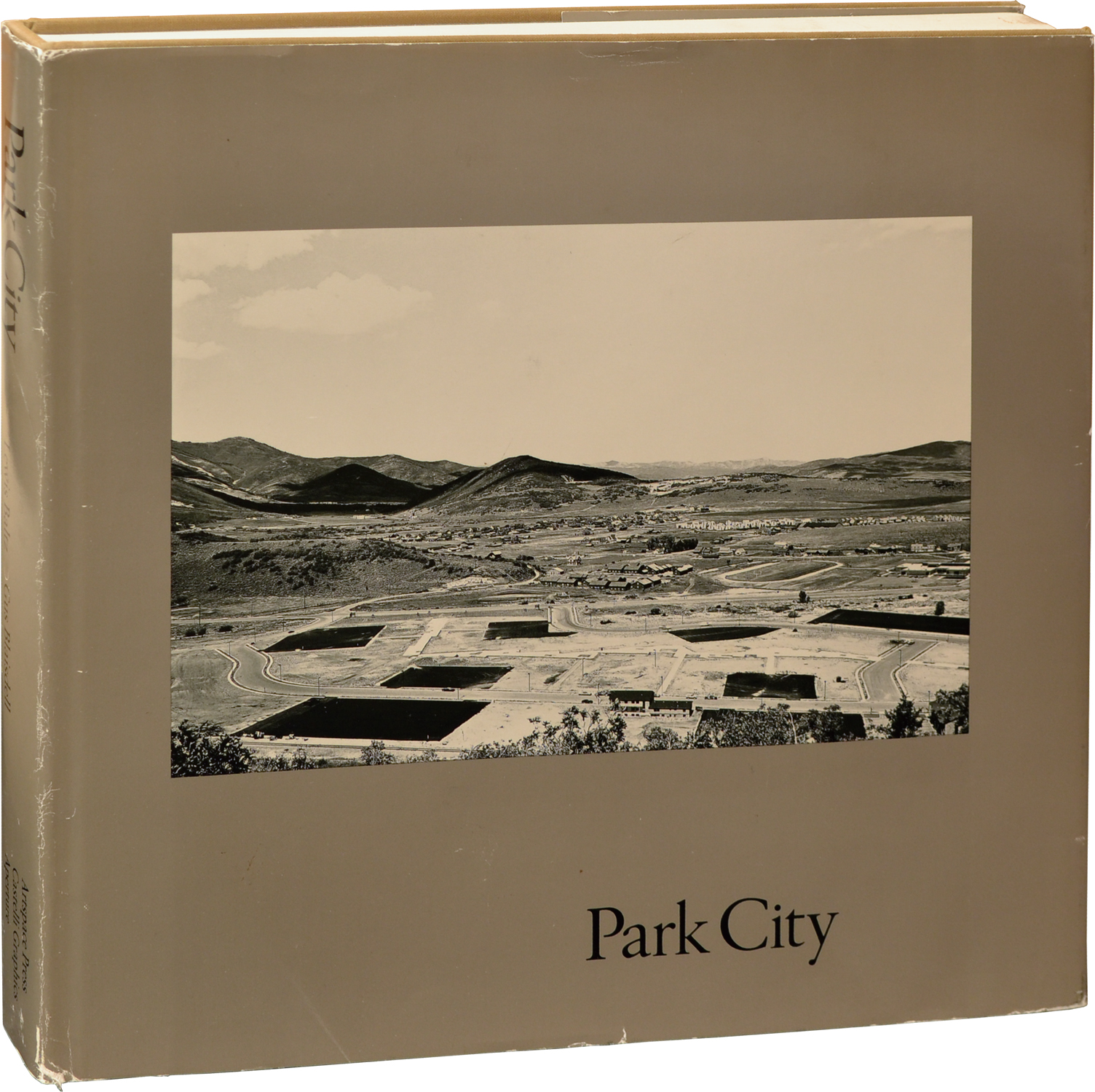
Price: US$275.00 + shipping
Description: First Edition. One of 3,000 copies. 102 black and white plates, all taken in and around the ski resort town of Park City, Utah during the late 1970s. Near Fine in a Very Good plus dust jacket. Some very light fading to the board edges. Jacket lightly edgeworn, with a short closed tear to the top of the rear panel.
Seller: Royal Books, Inc., ABAA, Baltimore, MD, U.S.A.

Lewis Baltz; Gus Blaisdell. Park City. Artspace Press / Castelli Graphics, 1980.
Price: US$350.00 + shipping
Condition: Fine
Description: Original printing, still in shrinkwrap.
Seller: Moe's Books, Berkeley, CA, U.S.A.

Price: US$395.50 + shipping
Condition: Fine
Description: 10.5 in. x 11 in., 246 pages, Cloth, Mostly full-page illustrations from photographs. edition. Fine.
Seller: Dawson's Book Shop, ABAA, ILAB, Los Angeles, CA, U.S.A.

Price: US$434.50 + shipping
Condition: As New
Description: First edition, first printing. Signed in black ink on the title page by Baltz (signed at the Galerie Thomas Zander in Cologne). Hardcover. Fine cloth, with photographically illustrated dust jacket. Photographs by Lewis Baltz. Essay by Gus Blaisdell (in English). Designed by Jack W. Stauffacher. 246 pp. with 102 duotone plates. 10-7/8 x 11-1/4 inches. This edition was limited to 3000 hardbound copies. Out of print and a rare. [Cited in Martin Parr and Gerry Badger, The Photobook: A History, Volume II. (London and New York: Phaidon, 2006). As New in Near Fine dust jacket (stray surface marks and wear to the extremities), in original publisher's shrink-wrap saved with the book; dust jacket enclosed in a removable archival Brodart cover. While Lewis Baltz is perhaps best known for his New Industrial Parks near Irvine, California series, Park City might be a better candidate as the magnum opus of the artist's early work. Not merely representative of the stylistic and conceptual framework of the photographic movement he helped to define, Park City is the single most exhaustive and far-reaching visual criticism of 1970s-era American real estate development: the book is thus the New Topographics document par excellence. The book's 102 plates (Baltz defines the Series as "a sequential work of 102 elements") first take the viewer through overall site views that set up a jarring contrast between the mountains (already carved up for the ski area) and the freshly built condominiums and houses that soon will take over the landscape. Moving through the pages, the plates begin to focus more and more on the excavation and earth moving efforts that precede building; the mounds of earth, littered with construction debris, are but pitiful doubles of the mountains in the background. As Baltz takes us closer in, we can begin to discern the buildings themselves: dreadful echoes of The Tract Houses clumped together and rising ostentatiously from the once verdant valley floor. A little over halfway into the book, we're brought inside the still-under-construction homes, where images of more debris mingle with dingy interior views that invoke claustrophobia rather than inviting living spaces. A fireplace wall covered with a vapor barrier, too-small windows, miles of wood studs and endless drywall combine to suggest an oppressive blandness. By the time one arrives at the book's final plate, a feeling of pity for the eventual inhabitants of these spaces begins to emerge. And in the final image, we see just how many of these properties have been sold on a map dotted with push pins of varying colors, indicating the status of each lot in the subdivision. Recalling the book's first plate, a distant view of the landscape dotted with structures, this map is a satisfying final image, in that it represents the complete transformation of the landscape into an abstract, flat object--not unlike Baltz's photographs themselves. The centerpiece of a loosely conceived trilogy that began with the New Industrial Parks and ended with San Quentin Point, Park City embodies the best, most incisive and considered qualities of both, and stands as the finest publication by one of the most important of contemporary artists. In his philosophical essay on the work of Lewis Baltz, Gus Blaisdell rigorously examines the very nature of photography and its relationship to the physical world. Blaisdell systematically unclutters and demystifies previous attempts at understanding photographs of the real world, representation and perception, stripping bare all "gobbledegook" and "rigamarole" of various intellectual stabs. and he does it in a way that invites the reader along on his mind-bending ride. That's Gus. No critical writer comes close. The essay is essential reading for anyone seriously interested in photography. From the publisher: "During 1978 and 1979 Lewis Baltz, one of America's foremost contemporary photographers, undertook to document the building of a rapidly growing ski resort and second-home development east of Salt Lake City in Utah's Wasatch Mountains. His concern was to record the construction of Park City as an example of the urbanization of the American West. When Baltz first saw the landscape around Park City, it appeared utterly chaotic, devastated by decades of abuse and neglect. Littered with fragments of iron, glass, wood, and wire -- the residue of mining wastes abandoned years earlier -- much of the land could support only meager vegetation. The scene suggested the aftermath of cataclysmic, purposeless violence. During the two and one half years that Baltz photographed Park City, the wasteland was covered with houses and commercial structures; ironically these only increased the sense of starkness and desolation. In Year of Decision: 1846 Bernard DeVoto wrote that vacant grandeur of the Western mountains gave Americans a new image of solitude. Baltz's Park City photographs can be viewed as a record of the terminal stages of individuality and isolation played out against an indifferent natural setting, the heroic landscape recycled as a recreational resource. Baltz's view of the landscape as real estate has produced a series of photographs that taken together demand consideration as art. Working serially, Baltz asserts, develops, and questions the ideas that constitute the multiple and contradictory themes of his images. These photographs were made in the extraordinary harshness and clarity of Park City's high-altitude light. Edges are brittle, distant objects unobscured by atmosphere, as in a vacuum. Each object stands discrete and disassociated from its surroundings. Interiors, too, share this airlessness, suggesting claustrophobia rather than shelter. Many of these images suggest something of the quality found in photographs made during unmanned space probes. In Baltz's photographs essential information is often conveyed through indirection, in details or in far-distant objects. In Park City, as in many of Baltz's earli
Seller: Vincent Borrelli, Bookseller, Albuquerque, NM, U.S.A.
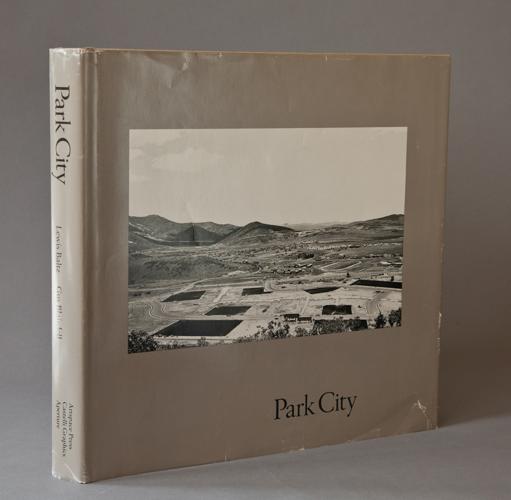
Baltz, Lewis. Park City. Artspace Press/Castelli Graphics, Albuquerque/New York (1980), 1980.
Price: US$452.00 + shipping
Condition: Near Fine
Description: 10 1/2 x 11 inches, 246 pages, Dust Jacket (small closed tear on front cover, price clipped), Baltz's third monograph and perhaps his most important book after his "Industrial Parks" project. First Edition edition. Near fine.
Seller: Dawson's Book Shop, ABAA, ILAB, Los Angeles, CA, U.S.A.
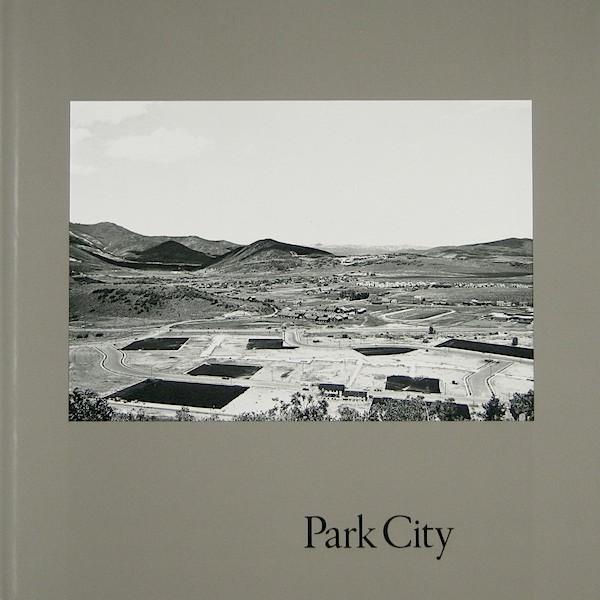
Price: US$477.77 + shipping
Condition: New
Description: Signed by Baltz, in black ink, to the title page. Edition of 3,000 copies. Cloth covered boards in a photographically illustrated dust jacket. Photographs by Lewis Baltz. Essay by Gus Blaisdell. Design by Jack W Stauffacher. Square 4to (26.5cm x 27.5cm), pp.246, 102 black and white plates. Cited in Martin Parr and Gerry Badger, The Photobook: A History, Volume II (London and New York: Phaidon, 2006) p.34, in Michel and Michèle Auer, 802 photo books from the M.+M. Auer collection (Hermance, Switzerland: Éditions M+M, 2007) p.628, and in Stephen Daiter et al.,ed., From Fair to Fine: 20th Century Photography Books that Matter (Chicago: Stephen Daiter Gallery, 2006). "Rigorous, passionate, fiercely intelligent, Park City is one of the most important photobooks of the late twentieth century." (Parr/Badger). From the publisher: "During 1978 and 1979 Lewis Baltz, one of America's foremost contemporary photographers, undertook to document the building of a rapidly growing ski resort and second-home development east of Salt Lake City in Utah's Wasatch Mountains. His concern was to record the construction of Park City as an example of the urbanization of the American West. When Baltz first saw the landscape around Park City, it appeared utterly chaotic, devastated by decades of abuse and neglect. Littered with fragments of iron, glass, wood, and wire -- the residue of mining wastes abandoned years earlier -- much of the land could support only meager vegetation. The scene suggested the aftermath of cataclysmic, purposeless violence. During the two and one half years that Baltz photographed Park City, the wasteland was covered with houses and commercial structures; ironically these only increased the sense of starkness and desolation. In Year of Decision: 1846 Bernard DeVoto wrote that vacant grandeur of the Western mountains gave Americans a new image of solitude. Baltz's Park City photographs can be viewed as a record of the terminal stages of individuality and isolation played out against an indifferent natural setting, the heroic landscape recycled as a recreational resource. Baltz's view of the landscape as real estate has produced a series of photographs that taken together demand consideration as art. Working serially, Baltz asserts, develops, and questions the ideas that constitute the multiple and contradictory themes of his images. These photographs were made in the extraordinary harshness and clarity of Park City's high-altitude light. Edges are brittle, distant objects unobscured by atmosphere, as in a vacuum. Each object stands discrete and disassociated from its surroundings. Interiors, too, share this airlessness, suggesting claustrophobia rather than shelter. Many of these images suggest something of the quality found in photographs made during unmanned space probes. In Baltz's photographs essential information is often conveyed through indirection, in details or in far-distant objects. In Park City, as in many of Baltz's earlier images, there is a continual tension between what the photographs describe and what they reveal."
Seller: Archive B, Macclesfield, CH, United Kingdom
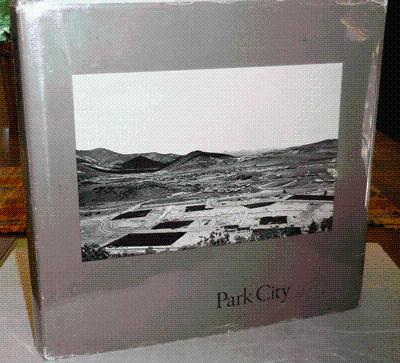
Price: US$500.00 + shipping
Condition: Very Good
Description: Oblong 4to. 246 pp. Text by Gus Blaisdell. Superb study documenting the building of a rapidly growing ski resort and second-home development near Salt Lake City. One of the photographer's best known works. A clean very good copy in mustard cloth in a good dustwrapper with small chips and short closed tears to edges. A respectable copy of an important book.
Seller: Derringer Books, Member ABAA, Avon, CT, U.S.A.

Lewis Baltz, Gus Blaisdell. Park City. Artspace Press / Castelli Graphics, Albuquerqu, 1980.
Price: US$500.00 + shipping
Condition: Very Good
Description: Cloth. First edition, signed by Baltz on the title page.
Seller: Moe's Books, Berkeley, CA, U.S.A.

Price: US$544.50 + shipping
Condition: As New
Description: First edition, first printing. Signed in black ink on the title page by Baltz (signed at the Galerie Thomas Zander in Cologne). Hardcover. Fine cloth, with photographically illustrated dust jacket. Photographs by Lewis Baltz. Essay by Gus Blaisdell (in English). Designed by Jack W. Stauffacher. 246 pp. with 102 duotone plates. 10-7/8 x 11-1/4 inches. This edition was limited to 3000 hardbound copies. Out of print and a rare. Includes a complimentary signed copy of Lewis Baltz: Nevada (New York: Castelli Graphics, 1978; item #108067). This first edition was limited to 2,000 copies. Out of print. Very scarce. Out of print. A very rare signed copy in New condition. Includes copies of the original 1978 exhibition "Nevada" press releases from the Susan Spiritus Gallery and Castelli Graphics, New York and a copy of the publisher ARTSPACE's original 1980 book release announcement. [Cited in Martin Parr and Gerry Badger, The Photobook: A History, Volume II. (London and New York: Phaidon, 2006). As New in As New dust jacket (with original publisher's shrink-wrap saved in the book; dust jacket enclosed in a removable archival Brodart cover. The included signed copy of Nevada is also in New condition. While Lewis Baltz is perhaps best known for his New Industrial Parks near Irvine, California series, Park City might be a better candidate as the magnum opus of the artist's early work. Not merely representative of the stylistic and conceptual framework of the photographic movement he helped to define, Park City is the single most exhaustive and far-reaching visual criticism of 1970s-era American real estate development: the book is thus the New Topographics document par excellence. The book's 102 plates (Baltz defines the Series as "a sequential work of 102 elements") first take the viewer through overall site views that set up a jarring contrast between the mountains (already carved up for the ski area) and the freshly built condominiums and houses that soon will take over the landscape. Moving through the pages, the plates begin to focus more and more on the excavation and earth moving efforts that precede building; the mounds of earth, littered with construction debris, are but pitiful doubles of the mountains in the background. As Baltz takes us closer in, we can begin to discern the buildings themselves: dreadful echoes of The Tract Houses clumped together and rising ostentatiously from the once verdant valley floor. A little over halfway into the book, we're brought inside the still-under-construction homes, where images of more debris mingle with dingy interior views that invoke claustrophobia rather than inviting living spaces. A fireplace wall covered with a vapor barrier, too-small windows, miles of wood studs and endless drywall combine to suggest an oppressive blandness. By the time one arrives at the book's final plate, a feeling of pity for the eventual inhabitants of these spaces begins to emerge. And in the final image, we see just how many of these properties have been sold on a map dotted with push pins of varying colors, indicating the status of each lot in the subdivision. Recalling the book's first plate, a distant view of the landscape dotted with structures, this map is a satisfying final image, in that it represents the complete transformation of the landscape into an abstract, flat object--not unlike Baltz's photographs themselves. The centerpiece of a loosely conceived trilogy that began with the New Industrial Parks and ended with San Quentin Point, Park City embodies the best, most incisive and considered qualities of both, and stands as the finest publication by one of the most important of contemporary artists. In his philosophical essay on the work of Lewis Baltz, Gus Blaisdell rigorously examines the very nature of photography and its relationship to the physical world. Blaisdell systematically unclutters and demystifies previous attempts at understanding photographs of the real world, representation and perception, stripping bare all "gobbledegook" and "rigamarole" of various intellectual stabs. and he does it in a way that invites the reader along on his mind-bending ride. That's Gus. No critical writer comes close. The essay is essential reading for anyone seriously interested in photography. From the publisher: "During 1978 and 1979 Lewis Baltz, one of America's foremost contemporary photographers, undertook to document the building of a rapidly growing ski resort and second-home development east of Salt Lake City in Utah's Wasatch Mountains. His concern was to record the construction of Park City as an example of the urbanization of the American West. When Baltz first saw the landscape around Park City, it appeared utterly chaotic, devastated by decades of abuse and neglect. Littered with fragments of iron, glass, wood, and wire -- the residue of mining wastes abandoned years earlier -- much of the land could support only meager vegetation. The scene suggested the aftermath of cataclysmic, purposeless violence. During the two and one half years that Baltz photographed Park City, the wasteland was covered with houses and commercial structures; ironically these only increased the sense of starkness and desolation. In Year of Decision: 1846 Bernard DeVoto wrote that vacant grandeur of the Western mountains gave Americans a new image of solitude. Baltz's Park City photographs can be viewed as a record of the terminal stages of individuality and isolation played out against an indifferent natural setting, the heroic landscape recycled as a recreational resource. Baltz's view of the landscape as real estate has produced a series of photographs that taken together demand consideration as art. Working serially, Baltz asserts, develops, and questions the ideas that constitute the multiple and contradictory themes of his images. These photographs were made in the extraordinary harshness and clarity of Park City's high-altitude light. Edges are brittle, distant objects unobs
Seller: Vincent Borrelli, Bookseller, Albuquerque, NM, U.S.A.

Price: US$600.00 + shipping
Condition: Fine
Description: First edition. Essay by Gus Blaisdell. Oblong quarto. Fine in lightly worn, very near fine dust jacket. A nice copy. Parr and Badger, *The Photobook Volume 2*, p.34.
Seller: Between the Covers-Rare Books, Inc. ABAA, Gloucester City, NJ, U.S.A.
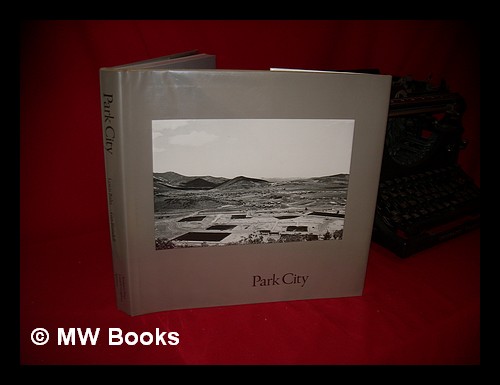
Price: US$653.38 + shipping
Description: An exceptional copy; fine in an equally fine dw. Particularly and surprisingly well-preserved; tight, bright, clean and especially sharp-cornered. Literally as new. ; 246 pages; Description: 246 p. : ill. ; 28 x 29 cm. Bibliography: p. 246. Subjects: Photography, Artistic. Park City (Utah) --Pictorial works. 2 Kg.
Seller: MW Books Ltd., Galway, Ireland

Price: US$724.00 + shipping
Description: An exceptional copy; fine in an equally fine dw. Particularly and surprisingly well-preserved; tight, bright, clean and especially sharp-cornered. Literally as new. ; 246 pages; Description: 246 p. : ill. ; 28 x 29 cm. Bibliography: p. 246. Subjects: Photography, Artistic. Park City (Utah) --Pictorial works. 2 Kg.
Seller: MW Books, New York, NY, U.S.A.
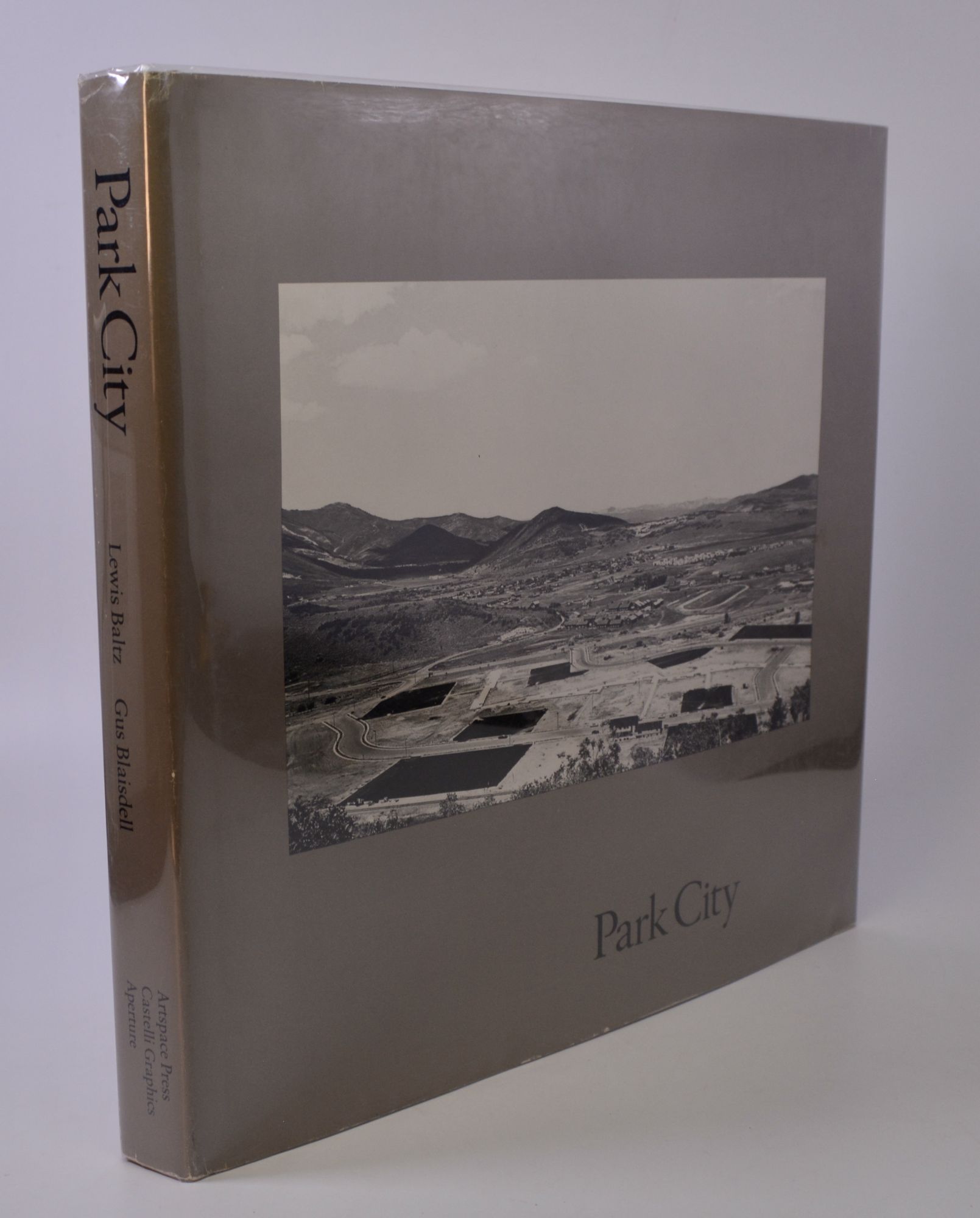
Price: US$750.00 + shipping
Description: Oblong 4to, 246pp; cloth. One of Baltz's haunting, poetic photographic documentations of urban development and the American landscape, accompanied by an essay by Blaisdell. The first edition consisted of only 3000 copies; this copy has been signed by Baltz on the title page. Grease mark to front board, else fine in a very slightly marked dust jacket
Seller: Locus Solus Rare Books (ABAA, ILAB), Los Angeles, CA, U.S.A.

Baltz, Lewis. Park City (Signed First edition). Artspace Press / Castelli Graphics, 1980.
Price: US$775.00 + shipping
Condition: Fine
Description: Albuquerque: Artspace Press and New York: Castelli Graphics, 1980. (10.75 x 11.25 in, 27.8 x 28.7 cm), 248 pp. Essay by Gus Blaisdell. 102 black and white photographs. Original light brown cloth in fine condition (lightest of wear, less than perfectly fresh); original photographically illustrated dust jacket also in fine condition (with only the most minute bits of rubbing at the spine extremities, upper joint and upper and lower tips). SIGNED by the photographer in ink on the title page (not a recent signature - please see image).
Seller: William Gregory, Books & Photographs, Kenosha, WI, U.S.A.